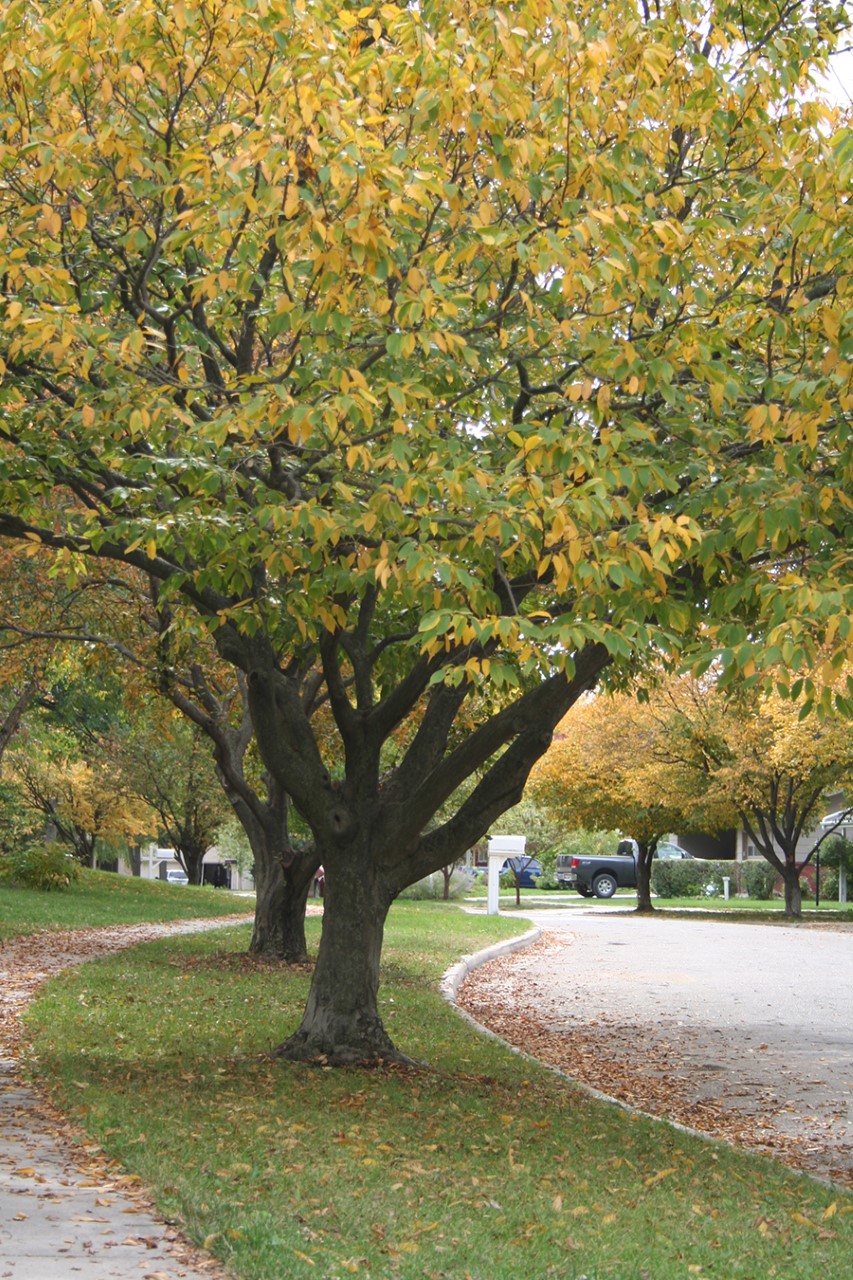
By: Justin Evertson, Green Infrastructure Coordinator
Beauty is in the eye of the beholder, with trees and shrubs as well as with other things. One person may see a maturing blackhaw viburnum as a beautiful multi-season plant, while their neighbor is annoyed with its poky branching and pungent flowers. We don’t all like or dislike the same things, and certainly don’t have to, but talking to other people can help us see the plants around us from a different perspective.
Two recent examples of changing perspectives on plants are coralberry and ornamental pear. Years ago, I was no fan of coralberry or “buckbrush” as it was a straggly understory plant with little interest and a tick magnet I tried to avoid when traipsing through the woods in spring. But now that I’ve learned how important it is for birds and wildlife, realized renewal pruning could keep it tight and discovered some of the newly-improved cultivars, it’s a mainstay in many of my plantings.
Conversely, when I first started planting trees I was impressed by the ornamental callery pear trees I saw everywhere. They were easy to plant and tough-as-nails with a pleasing shape, bright spring flowers and lovely red fall color. What not to like? I planted a few early on, but then I learned about their invasive nature and proclivity to storm damage and now I’m trying to convince people to quit planting them.
Seeing the value of plants means taking into account factors like ecology, ease of care, reliability and wildlife benefits. If we’re thinking about the ecological aspects of the landscapes we create, a plant’s ability to sustain biodiversity and not become invasive is as important as its ornamental qualities.
In many suburban landscapes trees and shrubs are mostly used as foundational “eye candy” with showy flowers or fall color, meaning that plants like callery pear, burning bush and spirea end up dominating them. This is unfortunate because there are some underutilized tree and shrub species equally beautiful that also support birds, insects and other pollinators. Here are 20 trees and shrubs that deserve more attention and more planting:
Evergreen Trees
Swiss stone pine, Pinus cembra, 30-40’
Concolor fir, Abies concolor, 30-50’
Douglasfir, Pseudotsuga menziesii, 50-60’
Bosnian pine, Pinus heldreichii, 30-40’
Taylor juniper, Juniperus virginiana ‘Taylor’, 25’ tall and only 3-4’ wide
Small Ornamental Trees
Dwarf chinkapin oak, Quercus prinoides, 15’
Shadblow serviceberry, Amelanchier canadensis, 15’
American hornbeam or musclewood, Carpinus caroliniana, 20-25’
Cucumber magnolia, Magnolia acuminata, 30-40’
Crabapples, Malus species in a range of sizes
Large Shrubs
Blackhaw viburnum, Viburnum prunifolium, 10-15’
Alleghany viburnum, Viburnum × rhytidophylloides, 10-15’
Eastern wahoo, Euonymus atropurpureus, 12’
Bottlebrush buckeye, Aesculus parviflora, 10-15’
Shining sumac, Rhus copallinum, 12’
Medium & Small Shrubs
Snowberry, Symphoricarpos albus,
Common Juniper, Juniperus communis,
Muskingum Gray Dogwood, Cornus racemosa ‘Muskingum’ dwarf, 3-4’
Dwarf black chokeberry cultivars, Aronia melanocarpa, range from 12” to 4’
Dwarf Fothergilla, Fothergilla gardenia, 3-4’